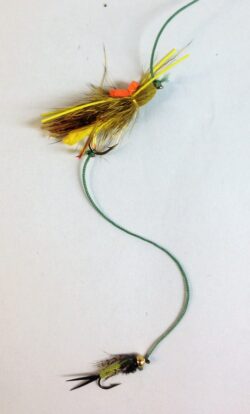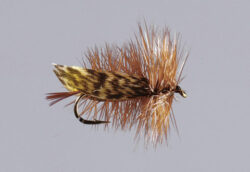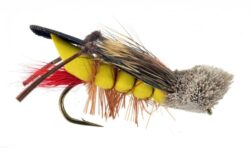Now is Hopper Time in Montana! Grasshoppers are like floating Burritos for many fish. The big the Plop, the bigger the mouthful.
The key to a great Hopper is that they Plop! Sound and vibration tend to excite the hungry trout. The sound or feel of a hopper hitting the water means the dinner bell is ringing. Get ready to set the hook. Trout will travel several feet to find their tasty hopper treats. Many guides and anglers use the hopper as a Hopper / Dropper rig. The hopper becomes a fancy strike indicator. This works but takes away from the fun of just the hopper. 
The first Hopper Plopping that ever did was along the Firehole River, in Yellowstone Park. The Nez Perce, Firehole, and Little Firehole were hopper paradise. At that time, you could still fish upstream from the Midway Geyser Basin. Hoppers concentrated around the hot springs. BIG Browns would feast on the hoppers. Our hopper in those days was Joe’s Hopper. When floated it worked well but it also was a great nymph or drowned hopper. 
Fishing along the grassy banks was the best. The trick was to hit he grass and allow the hopper to fall into the water. This presentation was killer. The big trout were laying close to the bank waiting for an easy plopper. They would slowly slide under the fly and follow it for a few feet. Finally, they would sip the tasty fly in. If you could survive the first run, you had a chance at getting the fish to the net.
Hoppers come in many sizes and colors. You can certainly mix and match what your fly box is stocked with. The key is a smooth presentation. You want the perfect plop of a hopper without the Slap of your line and leader. This takes a bit of practice and is best learned on the river. Just short stroke the forward cast a bit until the hopper plops and the line gently floats to the water. 
A hearty leader is a good idea for Plopping. You can add a thinner, but stronger, fluorocarbon tippet to the business end of your leader. 8-10 lb. test is great.
Match the size of the hoppers hopping along the river’s edge. Sharpen your hooks. I also use a small dropper nymph just because. You will be amazed how many times you get a hopper hit and catch them on the nymph. A small Zebra midge, Lightening bug or any lightweight, but small, nymph will do. Tie the dropper to the bend of the Hopper hook.
Use a Hopper with “ASS”! What I mean is that the hopper must be hefty enough to make a decent plop, just like a real meaty hopper. Many of today’s hopper patterns are made of foam. They float great but can rotate on the hook and simply have no “ass”. Use a hair style hopper along with a premium flotant.
Hoppers are supposed to float so a good gel flotant, like Aquel”, is a good idea. Also use a Desiccant powder, like “Shimazaki”, to dry the hair fly. Rinse any fish slime off the fly after you catch a fish. Now apply the desiccant powder. A couple of false casts and life is good. Hair flies will last longer than foam flies. The foam will tear and fall apart more easily. As a hair fly gets uglier, it just looks more natural.
Use a 9 foot 5 -6 weight fly rod for plopping your hoppers. The longer rod, lever, will give you more control and a quicker hook set. It will also handle the bigger fish you may catch. If you are fishing low, skinny waters, don’t forget the other, smaller terrestrials in your arsenal. They may be a smarter choice along lakes and clear Spring Creeks.
Later in the day, trout get lazy and tend to go subsurface. Now is when you nymph fish your hopper. A drowned hopper still Tastes sweet and is less work for the fish. It also mimics a sculpin or crayfish, just in case the menu changed.
Plop, plop, fish, fish away!
Montana Grant